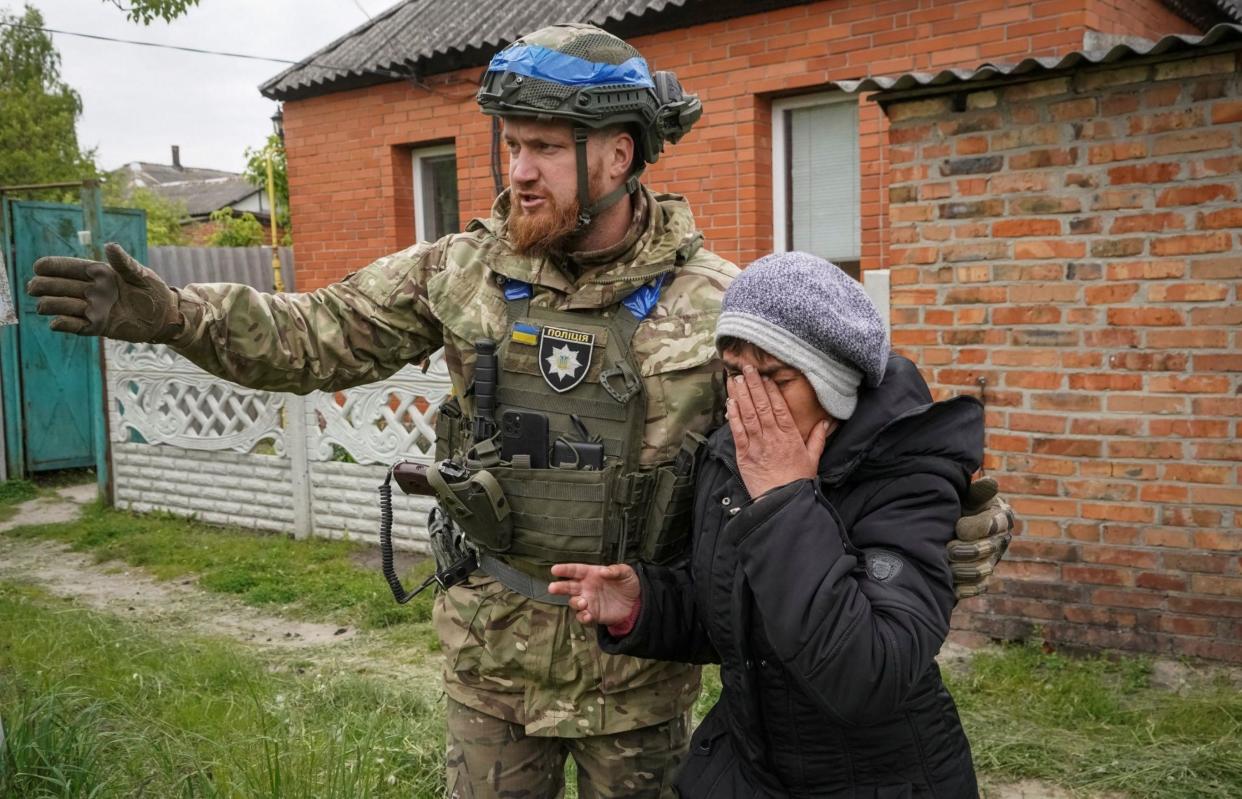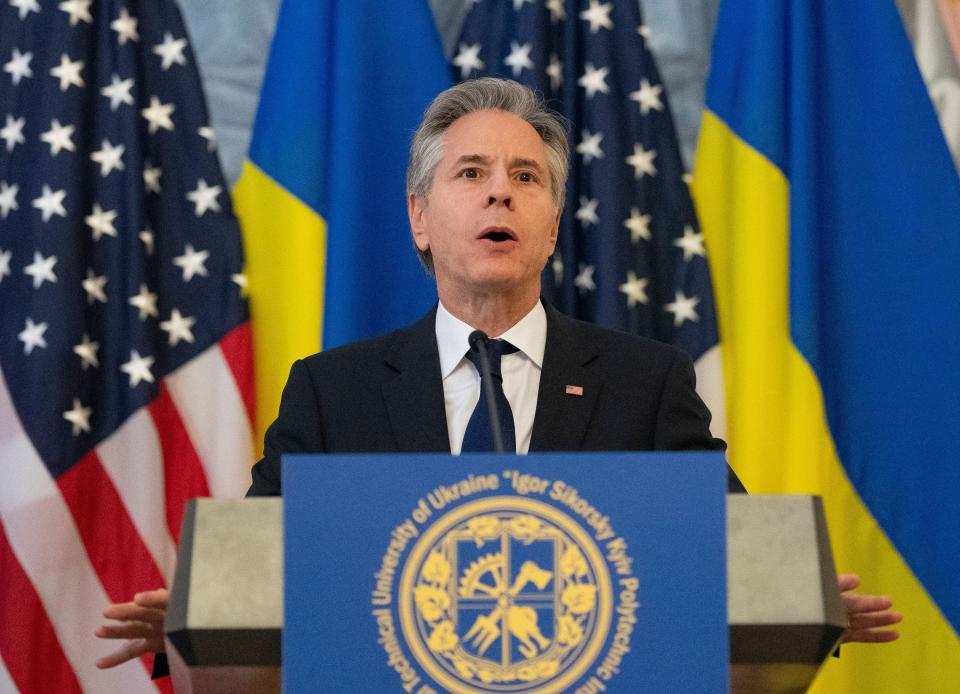Blinken visits during moment of peril for Ukraine

- Oops!Something went wrong.Please try again later.
The dimension of Russia’s invasion is dramatically changing in its favour.
For almost 18 months, the front lines have been in a state of relative stalemate, with occasional, modest Russian gains.
But in the space of a week, overstretched Ukrainian troops are struggling to contain the most significant ground offensive since 2022 in the north-eastern Kharkiv region.
"Help is on the way," is the US Secretary of State Antony Blinken’s message on a surprise visit to Kyiv. He comes during a perilous period for Ukraine.
Diplomatic visits by the country’s biggest military backer are not to be dismissed. The handshakes, working lunches and walkabouts typically bear fruit.
The approval of a $61bn military aid package in Washington is the biggest, juiciest one yet. But a month on, a fraction of it has arrived.
US officials stress some of the air defence systems, artillery and missiles are already in the eager hands of Ukrainian soldiers. Mr Blinken claimed, "they will make the difference on the battlefield".
Perhaps those words would have carried more weight five days ago, when Ukrainian forces were just about hanging on across the 1,000km front line.
Now, they’re moving what few reserve troops they can to the Kharkiv region, where an estimated 30,000 Russian soldiers are continuing to advance from across the border.
They’ve taken at least 50 square miles (130 sq km) of once-liberated territory, in yet another cruel twist for this embattled province.
Russia threw the kitchen sink at it in 2022, and it appears to be gearing up to do the same again.
"Moscow’s tactics remain unchanged", Andriy Zadubinnyi, a Ukrainian military spokesman, tells the BBC.
"They cover Ukrainian soldiers with artillery fire and air strikes. Then, they split into small groups and begin to attack."
Russia’s goal of conquering Ukraine hasn’t changed, but the latter’s ability to fight back has.
In September 2022 a Ukrainian minister who could barely contain his delight was telling me: "We have so many prisoners of war now!"
His forces had outsmarted and outmanoeuvred their Russian occupiers by liberating more than 2,000 sq km (770 square miles) in the Kharkiv region.
Cities like Kupiansk and Izium were back under Ukraine’s control once more.

After a summer of grinding losses for Kyiv, it was a change in momentum no one had predicted.
The country had the wind in its sails, and grounds to believe it could win this war.
A year and a half later, that optimism which filled Kyiv’s corridors of power has gone. Events in Kharkiv are threatening to derail any hopes of liberation.
Those same eastern cities are at risk of falling once more, and thousands are fleeing their homes under constant bombardment.
There’s no doubt the delay of American military aid has played a role in Ukraine’s struggles to contain Russia’s growing dominance.
But so too have mobilisation issues and, in the case of the Kharkiv region, questionable defences and fortifications.
Evacuations are also planned for 115 settlements in the Sumy region further north. Local commanders are anticipating a Russian offensive there too.
It’s why Kyiv’s goal, for now, is simply to stabilise the front line. Although, what’s happening on this new front line means it’s likely to get worse before it gets better.

